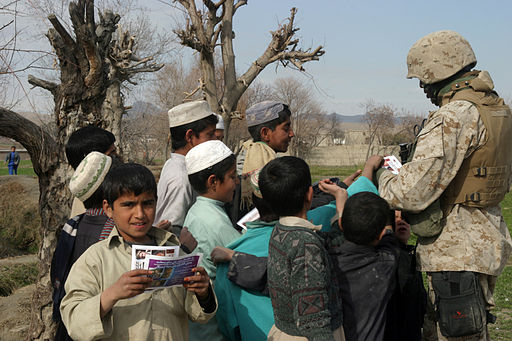
Military “Propaganda” in its Current Form
 This weekend, USA Today indicated that outgoing Defense Secretary Leon Panetta expressed skepticism at the effectiveness of the Pentagon’s “propaganda” programs.
This weekend, USA Today indicated that outgoing Defense Secretary Leon Panetta expressed skepticism at the effectiveness of the Pentagon’s “propaganda” programs.
To an extent, Panetta is right: it is incredibly difficult to gauge the effectiveness of modern “propaganda.” This makes perfect sense, especially if the communication campaigns comprising that “propaganda” aren’t particularly well-suited for the target audience.
According to the article, Michael Zenko of the Council on Foreign Relations said:
The Pentagon has an obligation to the American people, and the world, to provide information and tell its story — if nothing else to counter myths and misinformation. But it should only do so in an open and transparent way. Using third-party contractors to shape public opinion is dishonest and unethical.
For the most part, Zenko is correct that the Pentagon has a certain obligation to counter myths and misinformation that negatively impact its mission effectiveness. As he also points out, transparency and honesty are crucial in assisting the Pentagon in meeting this obligation. With regards to truth and propaganda, Edward R. Murrow’s classic quote explains it best:
American traditions and the American ethic require us to be truthful, but the most important reason is that truth is the best propaganda and lies are the worst. To be persuasive we must be believable; to be believable we must be credible; to be credible we must be truthful. It is as simple as that.
Yet where Zenko’s statement seems less accurate is in the use of contractors. Whether one employs third-party contractors to design communication campaigns isn’t the issue. The issue is whether those contractors are actual communication professionals who can present truthful information in a way that both resonates with the target audience and assists in achieving mission goals. Questioning the premise of using third party contractors obfuscates the questions of message effectiveness and whether Pentagon actually possesses well-trained staff that can develop these types of effective communication strategies. This is unclear.
In military information operations (IO), it is critical to understand the mission’s objectives. Is the IO campaign designed to have a tactical or strategic effect? Is it aiming for long-term or short-term results? Is the target audience foreign military members, an insurgent group, the general population, or another element? What types of mediums does the target audience use? Is the target audience literate? Will the selected imagery (if any) resonate with that audience? Do we understand the audience’s culture, customs, and norms? Just because something is familiar to Americans, doesn’t mean it will be understood by the target audience.
IO planners must be cognizant of the spectrum of reality and perception, and how any potential IO campaign fits into the picture. If an IO campaign is actively trying to alter perceptions of an issue in which the target audience’s experiences in reality contradict the perception we desire, there is a significant chance that attempts to alter this perception without addressing the reality will reduce the messenger’s credibility. Of course, this also negatively affects the ability to influence audience perceptions when those perceptions are not reflective of reality.
In Afghanistan, IO efforts appear to have had mixed effects, likely resulting in some of Secretary Panetta’s skepticism. The use of leaflets, posters and imagery in areas with high illiteracy and little visual or print media rendered the use of such tactics questionable at best. Since many IO campaigns were ill-suited for the environment and the audience, it is no wonder that the effectiveness of such campaigns as a whole has been called into question.
If efforts to influence the target audiences in areas of military or political conflict are being viewed by policy makers solely as propaganda efforts, that may be where part of the problem lies. If the strategic or tactical goal is not clearly defined, that certainly can have an effect on the effectiveness of IO as well. What policy makers and the military should do is clearly define their goals, and employ professionals who can determine ways in which communication can be used to increase influence towards accomplishing those goals. As a nation, we must understand that information operations, propaganda, or public diplomacy—whatever we choose to call it—is far from a silver bullet, and should not be measured with a rubric of absolutism. It can be, however, a scope that helps present a clearer picture of what it is we are trying to do and how we can do it better.






[…] Military “Propaganda” in its Current Form […]
[…] people pejoratively use the word “propaganda” to describe a wide array of government communications techniques. However, propaganda should not […]